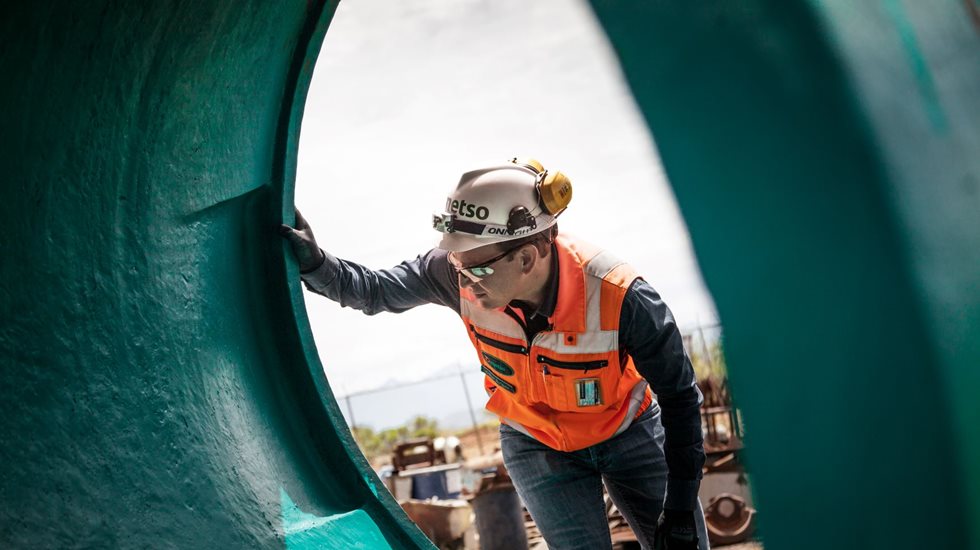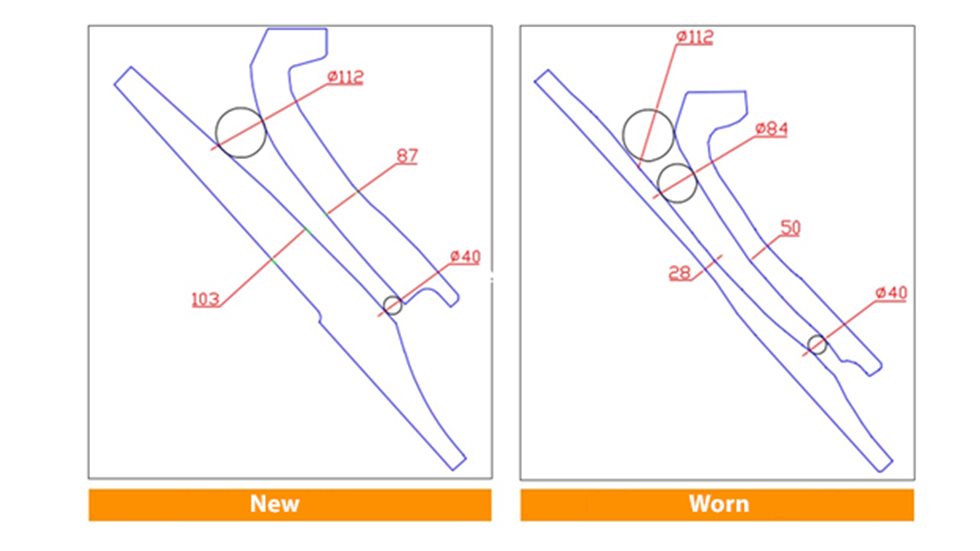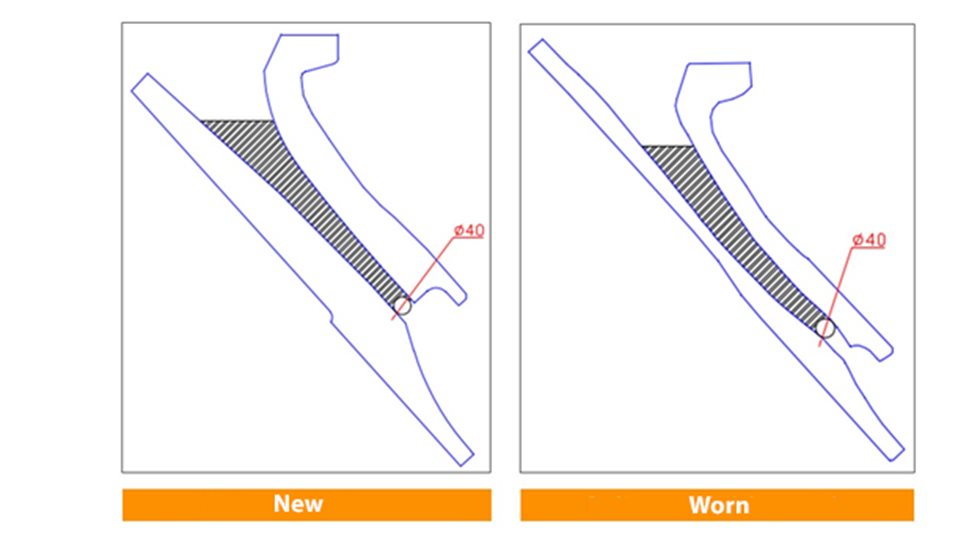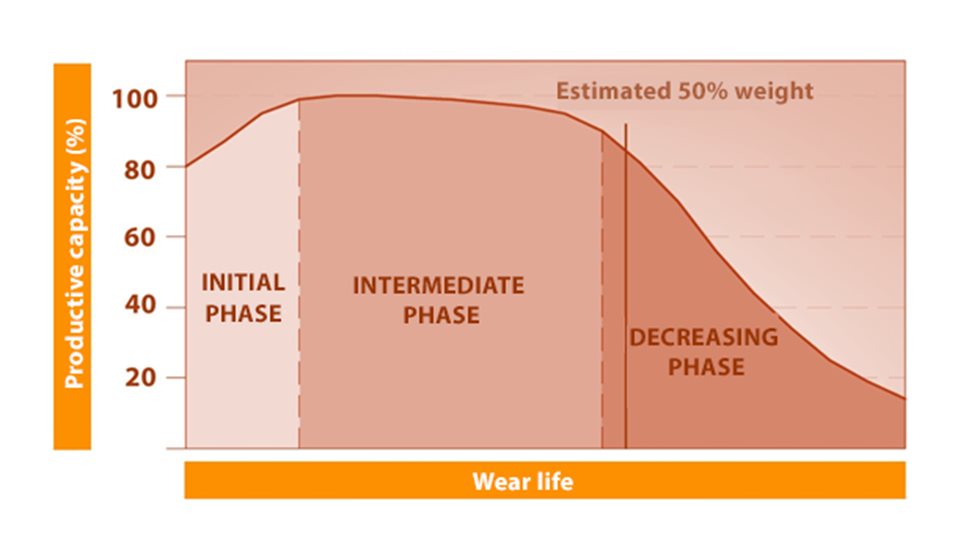-
Initial phase
It has been observed that most of the time, the new liner starts at 80% of productive capacity. This continues for a short period of time while the cavity becomes adjusted to the operating conditions.
-
Intermediate phase
This phase begins once the profile is adapted to the grain size, CSS, and tonnage, and the operating parameters stabilize within the safe ranges. During this phase, the production capacity is closer to 100% capacity for a longer period than in the first phase.
-
Decreasing phase
It has been estimated that this phase is reached once the wear on the profile reaches 50% by weight. At this stage it is recommended to change the liners, as the reduction of the volumetric capacity triggers an accelerated decline in productivity.
Final recommendations
- Keep a log of the weights of the worn parts to obtain optimal utilization rate, which should ideally be between 45% and 55%
- Take into account the formula to calculate the utilization rate:
U.R. = (Weight of new part-Weight of worn part) × 100 / (Weight of new part)
- Monitor and follow tons/ hr production.
- Identify how much tons / hr decreases when reaching the 50% utilization rate of the wear parts. If this value is above 10% loss of tons / hr, it is recommended to change the liners.
- It is important to assess whether continuing to use the liner above 50% U.R. compensates for the loss in tons/ hr that will be produced. This loss in tonnage is immediately compensated if liners are replaced with new ones.



